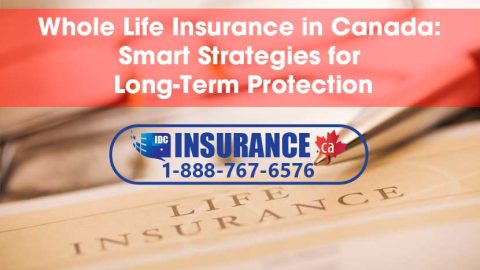Buying life insurance is an important financial decision that requires careful planning and consideration. With the right guidance, Canadians can secure the ideal policy to protect their loved ones. This guide will walk you through the entire process of how to buy life insurance in Canada.
Step 1 on how to buy life insurance: Determine Your Coverage Needs
The first step is to evaluate your financial obligations and decide how much coverage you need. Consider factors like:
- Outstanding debts – Include mortgage balances, loans, credit cards, etc., that you want to be paid off.
- Income replacement – Calculate the income you provide through employment or your business that would need to be replaced.
- Funeral costs – are factors in end-of-life expenses like funeral services, burials, cremation, etc.
- Children’s needs – If you have dependents, estimate childcare, education, and other costs to maintain their standard of living.
- Medical bills – Major illnesses can leave families with significant unpaid medical bills.
- Legacy goals – Some purchase life insurance to leave an inheritance or make a charitable donation.
Online life insurance needs calculators can provide estimates, but speaking with a financial advisor gives more accurate projections for coverage amounts.
Step 2: Choose Between Term or Permanent Life Insurance
Once you’ve estimated the amount of coverage required, the next big decision is the type of life insurance policy to buy.
Term Life Insurance
- Provides coverage for a specified period of time – typically 10, 20 or 30 years.
- Offers pure protection without investment components.
- Generally, it is the most affordable life insurance option.
- Ideal if needs are short-term, like paying off a mortgage.
- Can convert to permanent insurance later if needed.
Read full review: Term Life Insurance
Permanent Life Insurance
- Provides lifelong coverage as long as premiums are paid.
- Includes a savings or investment component that builds cash value.
- More expensive but locks in lifetime coverage.
- Allows accessing cash value funds while alive.
- Types include whole life, universal life and variable life insurance.
Read full review: Whole Life Insurance
Term life meets most people’s temporary needs at the lowest cost, while permanent insurance is better for lifelong protection or leaving an inheritance.
Step 3: Work With a Licensed Life Insurance Agent
Purchasing life insurance involves navigating many complex factors. Working with a licensed agent or broker simplifies the process and ensures you make the right choices.
Experienced advisors like those at IDC Insurance Direct Canada can assess your financial needs, research suitable policies, compare quotes, and provide objective advice. This level of expertise is invaluable for first-time buyers.
Some key benefits of using an agent include:
- Comparing rates from multiple top insurers
- Optimizing policies to your budget and needs
- Avoiding exclusions, limitations or mistakes
- Answering questions and explaining details
- Facilitating medical exams if required
- Simplifying application paperwork
You can also request quotes and purchase insurance directly through insurer websites or call centers. However, the expertise of an independent broker offers significant advantages for most buyers.
Step 4: Compare Quotes From Different Insurance Providers

The cost of life insurance can vary drastically between insurance companies, so it is critical to compare quotes from multiple providers.
When reviewing and comparing quotes, look beyond just the premium cost. Also consider:
- Coverage amount – Make sure each quote meets the amount you need.
- Policy term length – Some offer terms as short as ten years or as long as 40 years.
- Insurer financial strength – Only choose companies with strong financial ratings.
- Customer service reputation – Look for providers known for quick claims payouts.
- Policy riders – Extra benefits like chronic illness riders come with fees.
- Exclusions or limitations – Understand exactly what is covered and what is not.
Getting personalized quotes from an independent broker gives the best opportunity to secure optimal coverage and pricing. Never just go with the cheapest policy cost alone.
Step 5: Submit Your Application and Undergo Medical Evaluation if Required
After deciding on a suitable policy, you must formally apply and get approved for coverage. This involves:
- Completing the insurer’s detailed application forms
- Providing personal, medical, financial and lifestyle information
- Designating primary and contingent beneficiaries
- Paying the first premium or deposit payment
- Signing documents and disclosures
- Waiting for policy approval (usually within 2-6 weeks)
Ensure all application information is complete and accurate. Once approved, you will receive policy documents outlining coverages, terms and conditions.
Depending on your age and the amount of coverage applied for, you may need to complete an insurance medical exam. This normally involves:
- Providing blood and urine samples
- Checking height, weight and vital signs
- Reviewing medical history with a nurse
- Assessing heart health via EKG
Insurers use exam results to verify health status and determine eligibility. Conditions like high cholesterol, elevated blood pressure or tobacco use can impact premiums.
Tip: Being honest on medical history questions is crucial. Incorrect or omitted information can void your policy later if a claim is filed.
Some policies for smaller amounts use “simplified issue” underwriting without full exams (no medical exam life insurance).
Guaranteed issue life insurance is also available but costs significantly more.
Step 6: Review Your Policy Carefully Before Accepting
Upon approval, carefully review all life insurance policy documents before accepting and paying your first premium. Look for:
- Correct personal details like name, birthdate and beneficiaries.
- Proper coverage amount, coverage term length, and premium costs.
- Exclusions, restrictions or limitations that limit payouts.
- Waiting periods before coverage takes full effect.
- Policy loans or cash value details if applicable.
- Options to increase coverage in the future.
- Instructions for submitting claims if ever needed.
If you notice any errors or have questions, contact your agent or insurer before accepting the policy. Never sign until you fully understand all provisions.
Step 7: Notify Beneficiaries and Keep Records
Once you formally accept the life insurance policy, you should:
- Notify all beneficiaries and provide details like the insurer’s name and policy number.
- Keep the physical policy documents, notices and statements together in a safe place.
- Set reminders for paying premiums when they are due.
- Review the policy yearly and adjust if your needs or beneficiaries change.
Following these best practices ensures your beneficiaries can easily submit a claim if the time comes. Shopping carefully for the right life insurance truly gives your family financial peace of mind.
Case Study Examples
Determine Coverage Needs
Sam is 35, married, and has one child. He makes $80,000 annually. He estimates needing:
- $250,000 to pay off mortgage
- $500,000 to replace ten years of income
- $100,000 for the child’s university
- $20,000 for funeral costs
His total life insurance need is approximately $870,000.
Read more: Final Expense Insurance
John and Jane are a married couple with two young children. John brings in $100,000 annually from his job. Jane earns $60,000 running her own consulting business. They have the following financial obligations:
- Mortgage balance: $300,000
- Credit card debt: $15,000
- Car loans: $25,000
- University savings funds for kids: $40,000 (current balance)
- Annual childcare and activities cost for kids: $18,000
They determined that if either of them passed away, they would need an insurance payout to cover debts, childcare and education. Their advisor helps them calculate a total life insurance need of $550,000 each.
Read more: Mortgage Protection Insurance
Choose Term or Permanent Life Insurance
Jennifer is 40 and wants to cover costs until her kids finish university in 12 years. Her advisor recommends a 15-year term policy.
Ryan is 60 and wants to leave an inheritance. His advisor suggests a permanent whole life policy that builds cash value.
Compare Quotes From Providers
Let’s assume we are comparing quotes for Peter, a 35-year-old male non-smoker in Ontario seeking $500,000 of 20-year term life insurance. Below is the sample annual premium from 5 leading providers :
| Insurer | Quote Details | Sample Annual Premium |
|---|---|---|
| Sun Life | 20-year term, $500k coverage | $420 |
| Canada Life | 20-year term, $500k coverage | $480 |
| RBC Insurance | 20-year term, $500k coverage | $468 |
| ivari | 20-year term, $500k coverage | $504 |
| Desjardins | 20-year term, $500k coverage | $456 |
Undergo Medical Evaluations
John is 50 and applying for $500k coverage. He has to complete lab tests and an EKG for full underwriting.
Jane is 25 and applying for $100k coverage. She only has to answer health history questions without a full exam.
Get Expert Guidance on Finding the Right Life Insurance for You
Buying life insurance is an important decision that requires careful consideration of your financial situation, coverage needs, and policy options. While it may seem complex, the licensed experts at IDC Insurance Direct Canada can simplify the process and help you secure the ideal policy.
Work with one of our advisors for:
- A free consultation to evaluate your specific insurance needs
- Quotes tailored to your budget and life circumstances
- Guidance on choosing the right policy type and features
- Access to top insurers with the best rates
- Assisting with the application and approval process
Don’t go it alone. Let us help take the guesswork out of buying life insurance and ensure your family is protected. With over 15,000 happy clients, you can trust our team to provide the expertise and service needed to gain financial security and peace of mind. Reach out today to get started!
How To Buy Life Insurance in Canada FAQs
[rank_math_rich_snippet id=”s-ceef3879-241b-4d7e-a118-0b867be685d6″]










